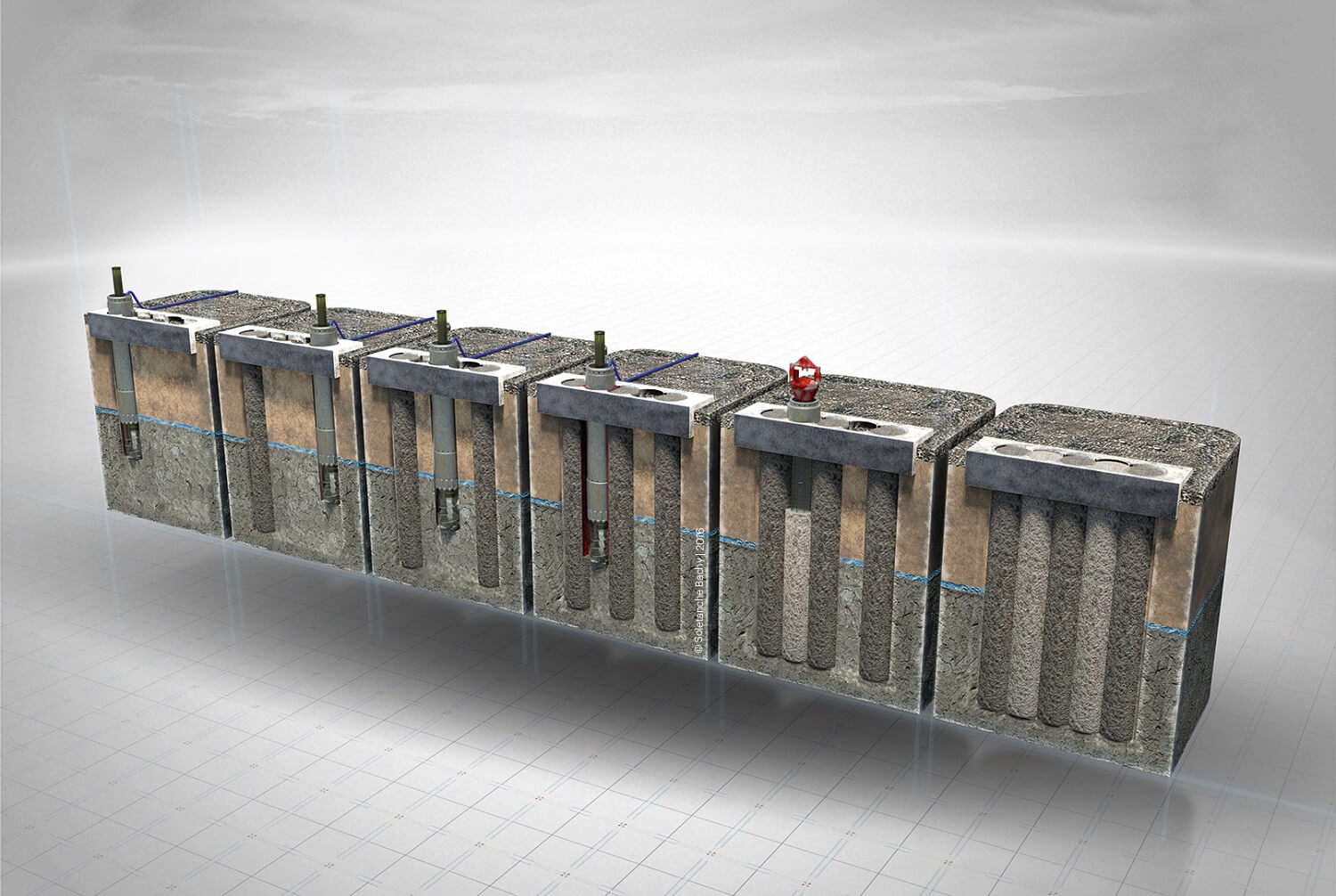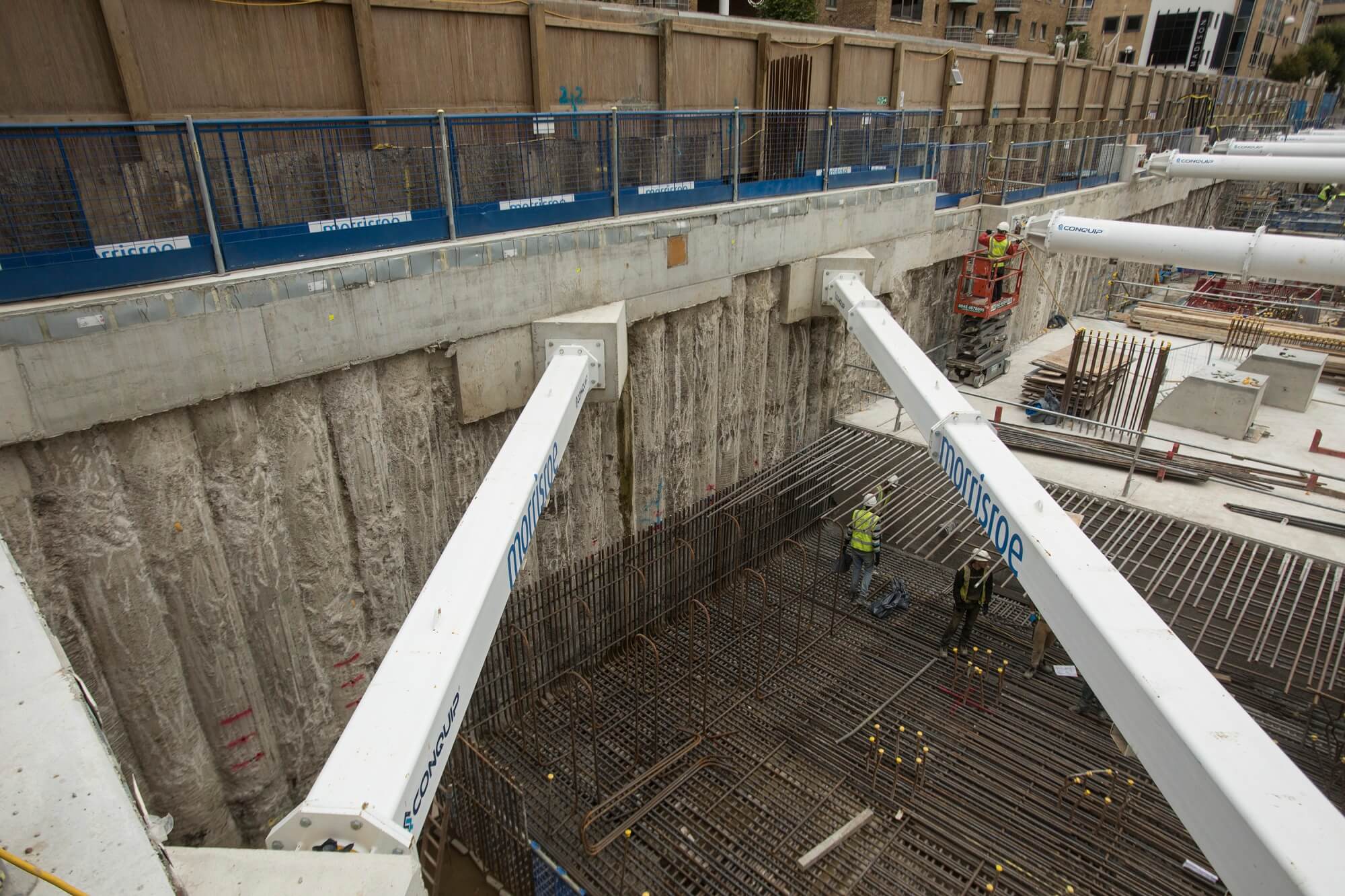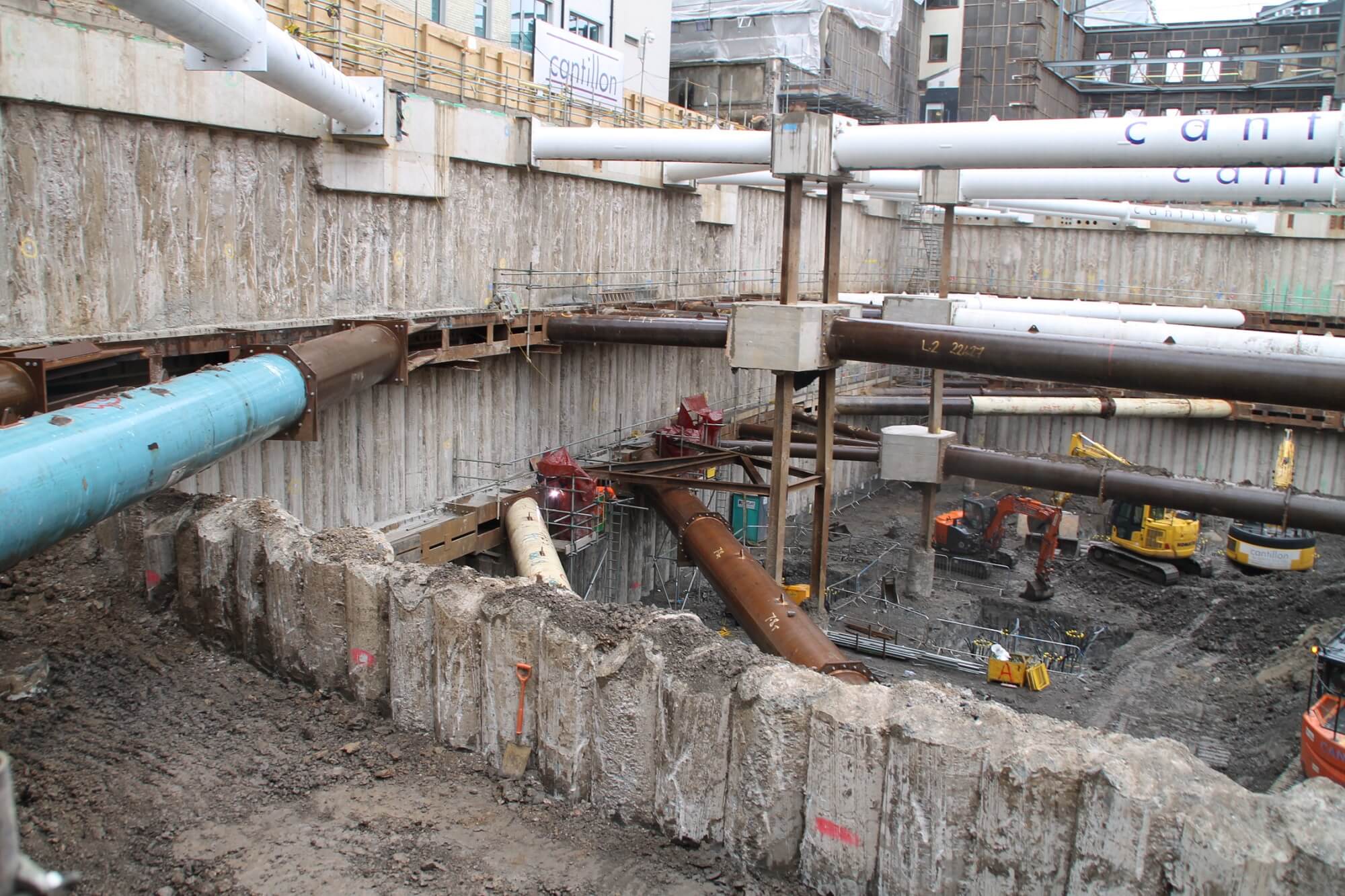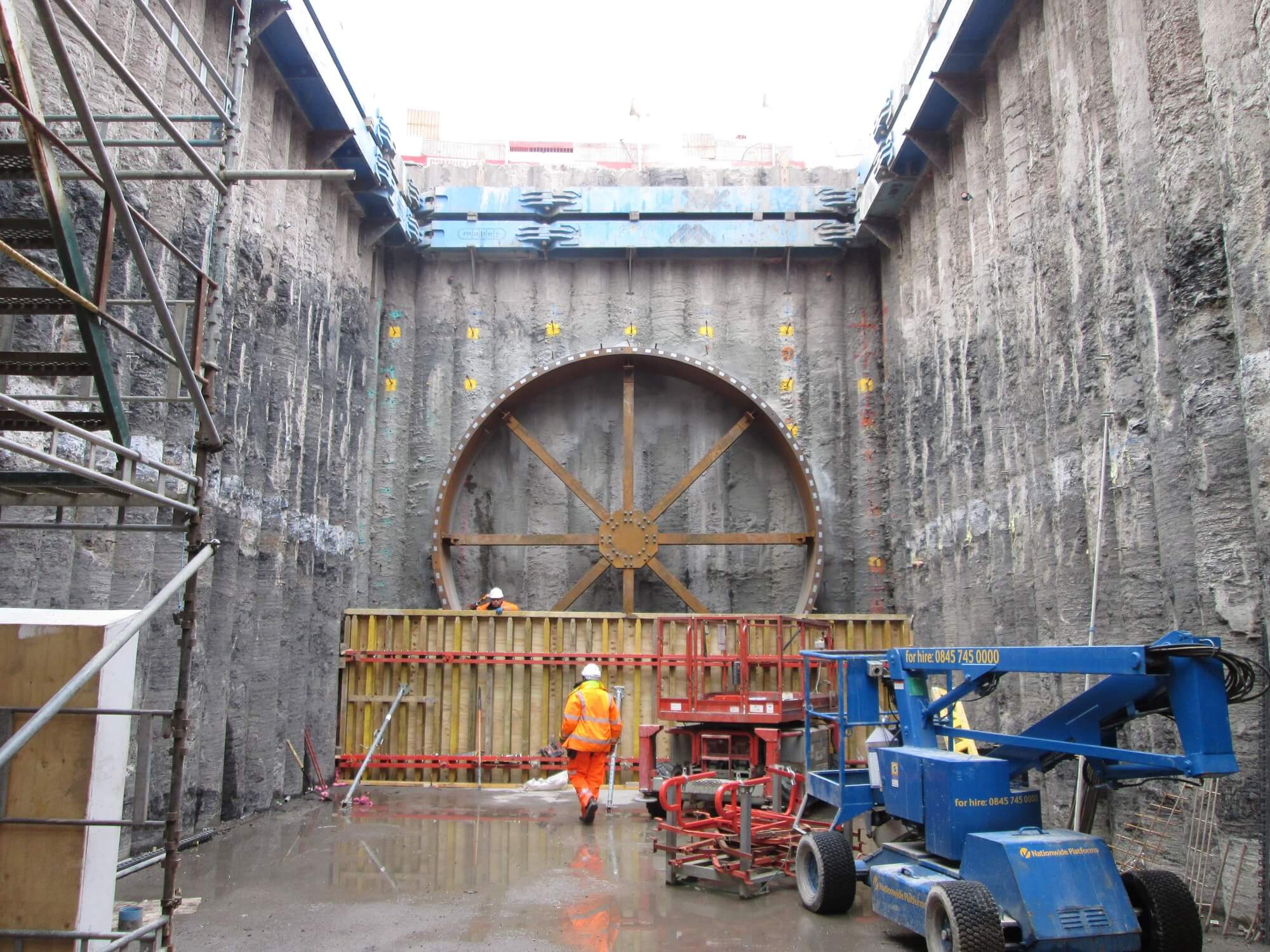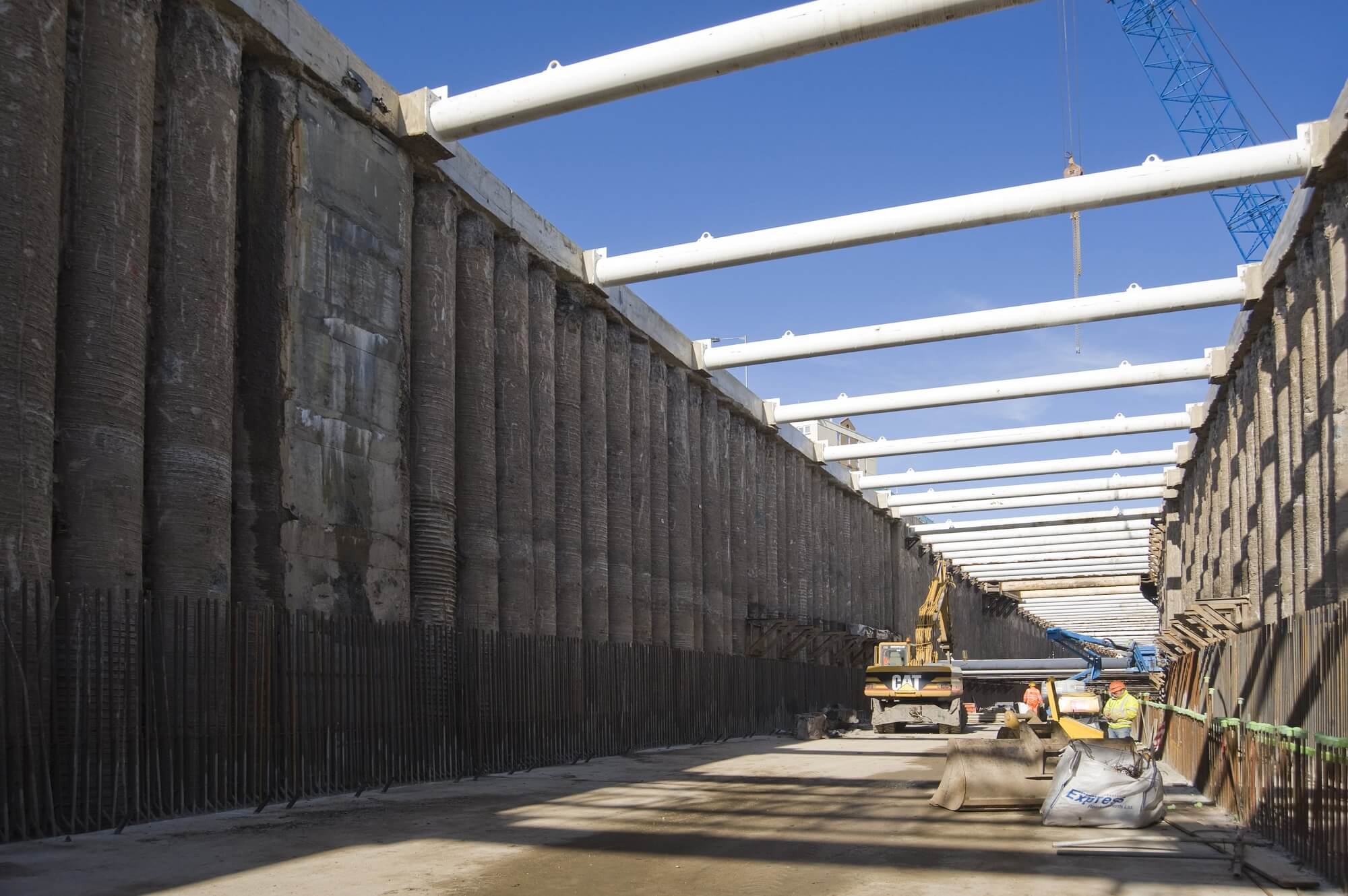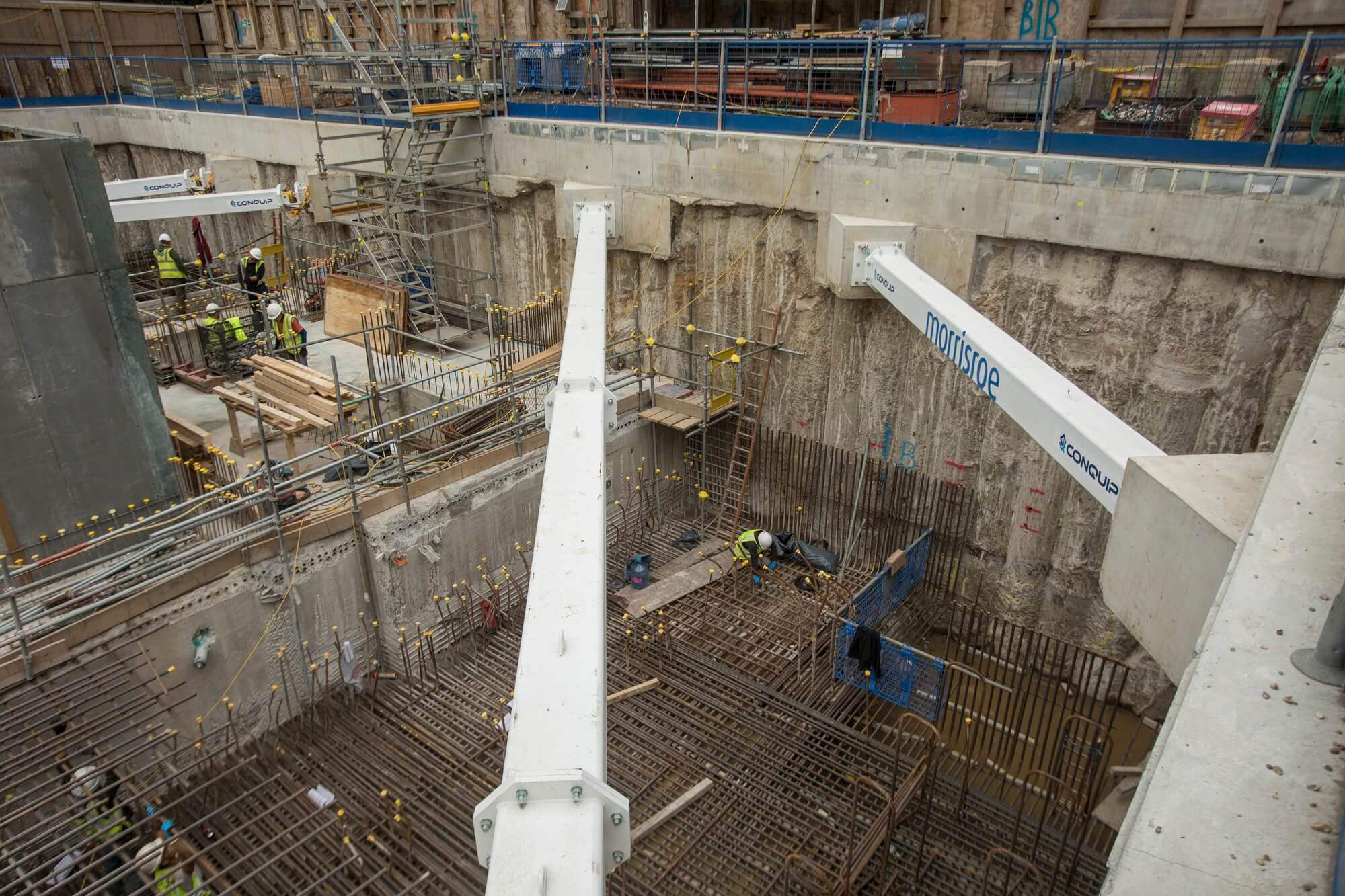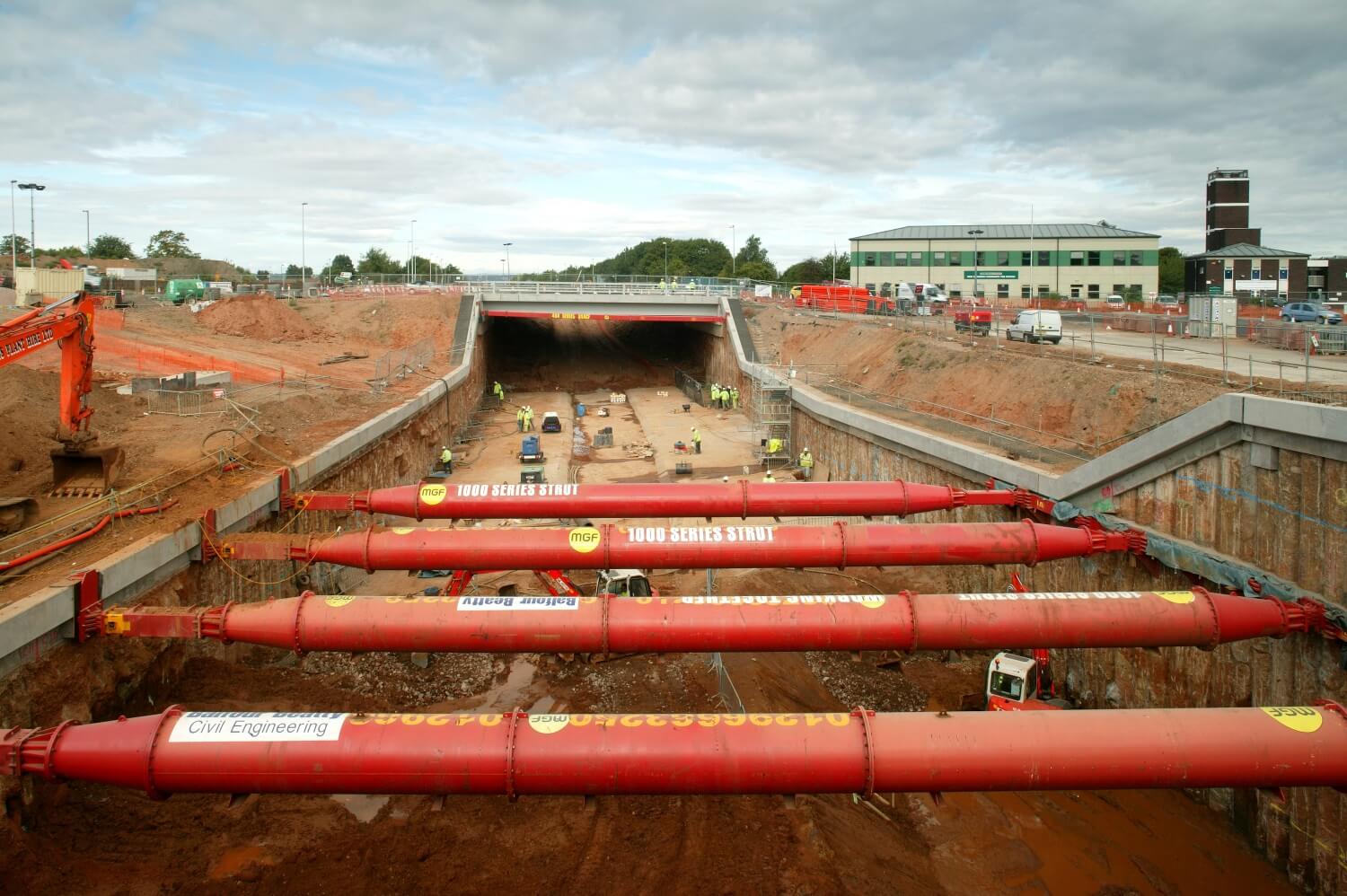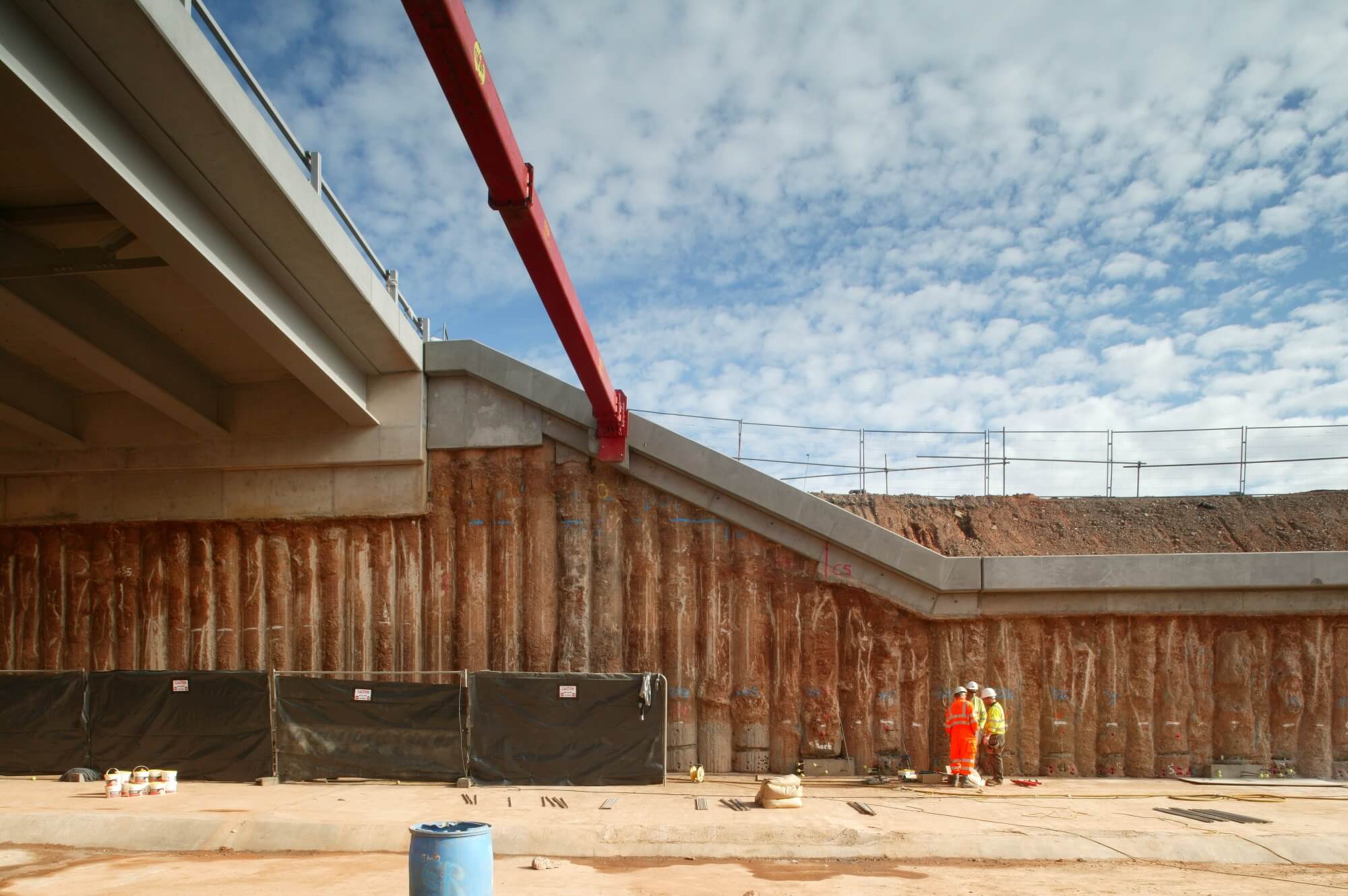A Secant Piled Wall is a retaining wall constructed for ground retention prior to excavation. The wall is formed by constructing alternating primary (female) and secondary (male) piles where the secondary piles partially cut into either side of the primary piles in order to form a continuous impervious structure. Secant walls are frequently used to as an alternative to Diaphragm walls where obstructions are anticipated, or in urban basement projects where space is limited. In comparison to diaphragm walls they can be flexible in shape and offer a relatively compact operation in comparison to the equipment required to support bentonite holding and circulation equipment.
HOW IT WORKS:
Secant piled walls are formed by the construction of alternating primary unreinforced piles and secondary reinforced piles where the secondary pile partially cuts though the primary pile either side to create a secant.
Secant piled walls can be:
- ‘Hard/Soft’ which incorporates a bentonite/cement slurry in the primary piles
- ‘Hard/Firm’ which incorporates high reinforcement/low strength concrete in the primary piles.
- ‘Hard/Hard’ which incorporates a full strength structural concrete in the primary piles.
The development of powerful high torque drilling equipment has led to an increase in the range of ground conditions and obstructions that can be penetrated, and the wall thicknesses that can be constructed. We are therefore able to install secant walls in the most challenging urban environment.
Piles in a secant wall are spaced at 0.8 to 0.9 pile diameters. Primary piles are secanted by secondary piles, thus providing a closed structure to act as a barrier in water bearing soils, and to prevent the ingress of soil between the piles.
Capability: Depending upon ground conditions, using CFA or LDA technology, we can build from 600mm to 1180mm diameter, to a depth range up to 24m (primary pile) with secondary pile (male) carrying on till 60m, depending upon technique.
Advantages: There is minimal vibration, low noise levels and the flexibility to fit complex site boundaries and maximise land use. Secant piling can also go through underground obstructions such as steel, heavily reinforced concrete, granite and masonry while, at the same time, avoiding any risk of construction induced settlements to neighbouring structures.
